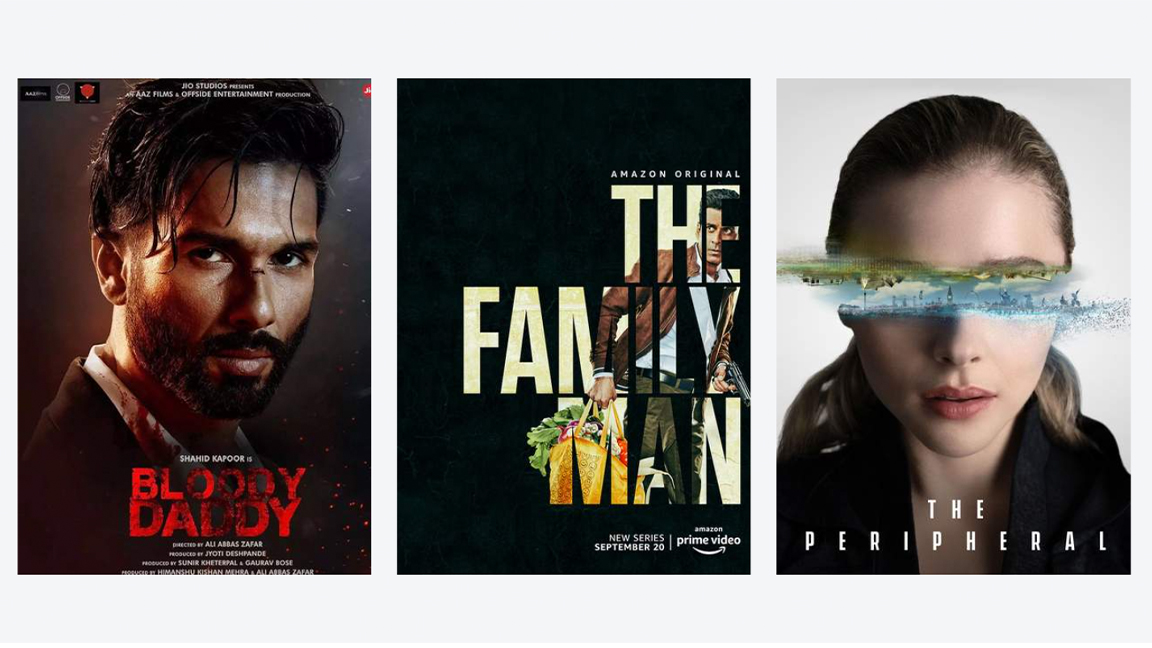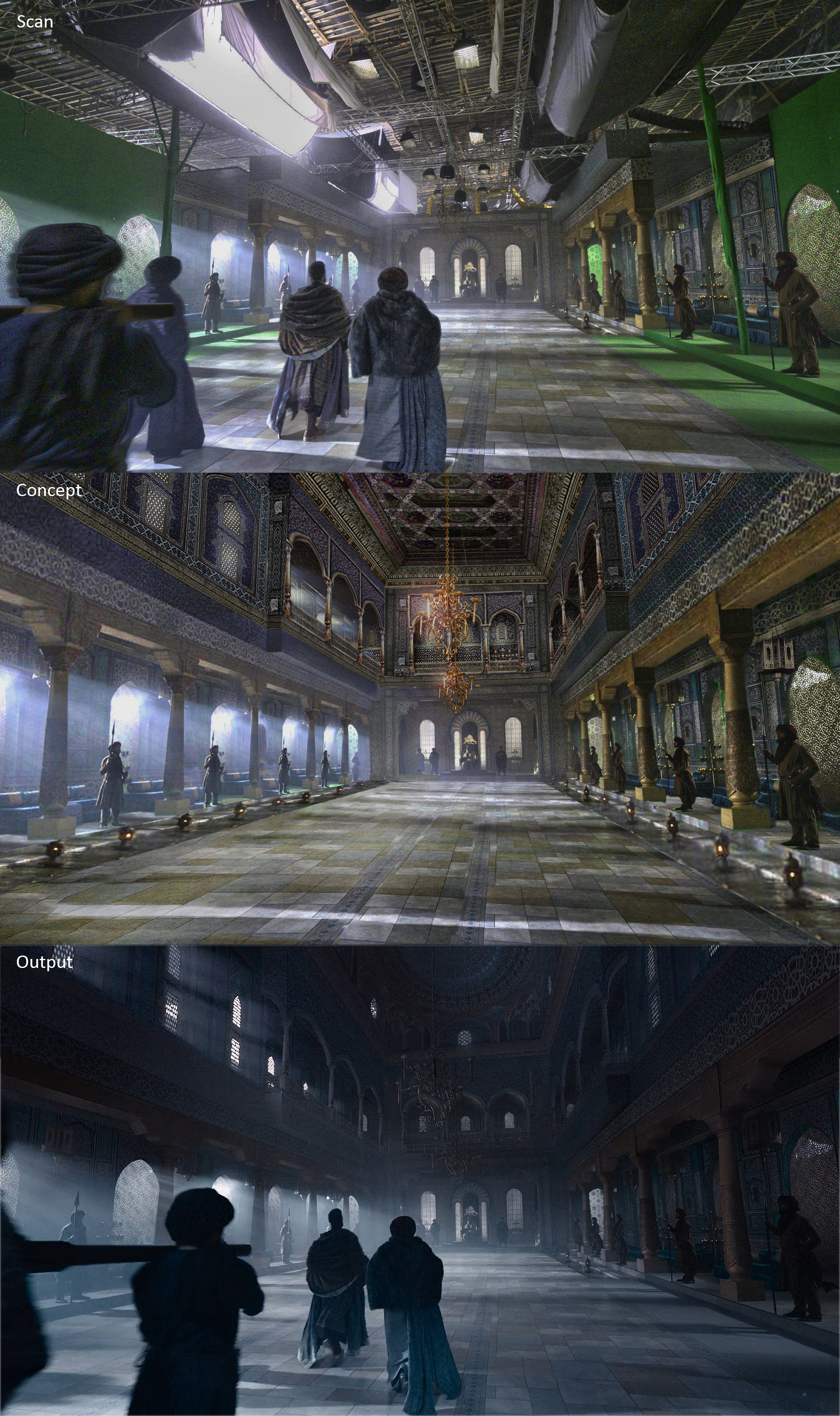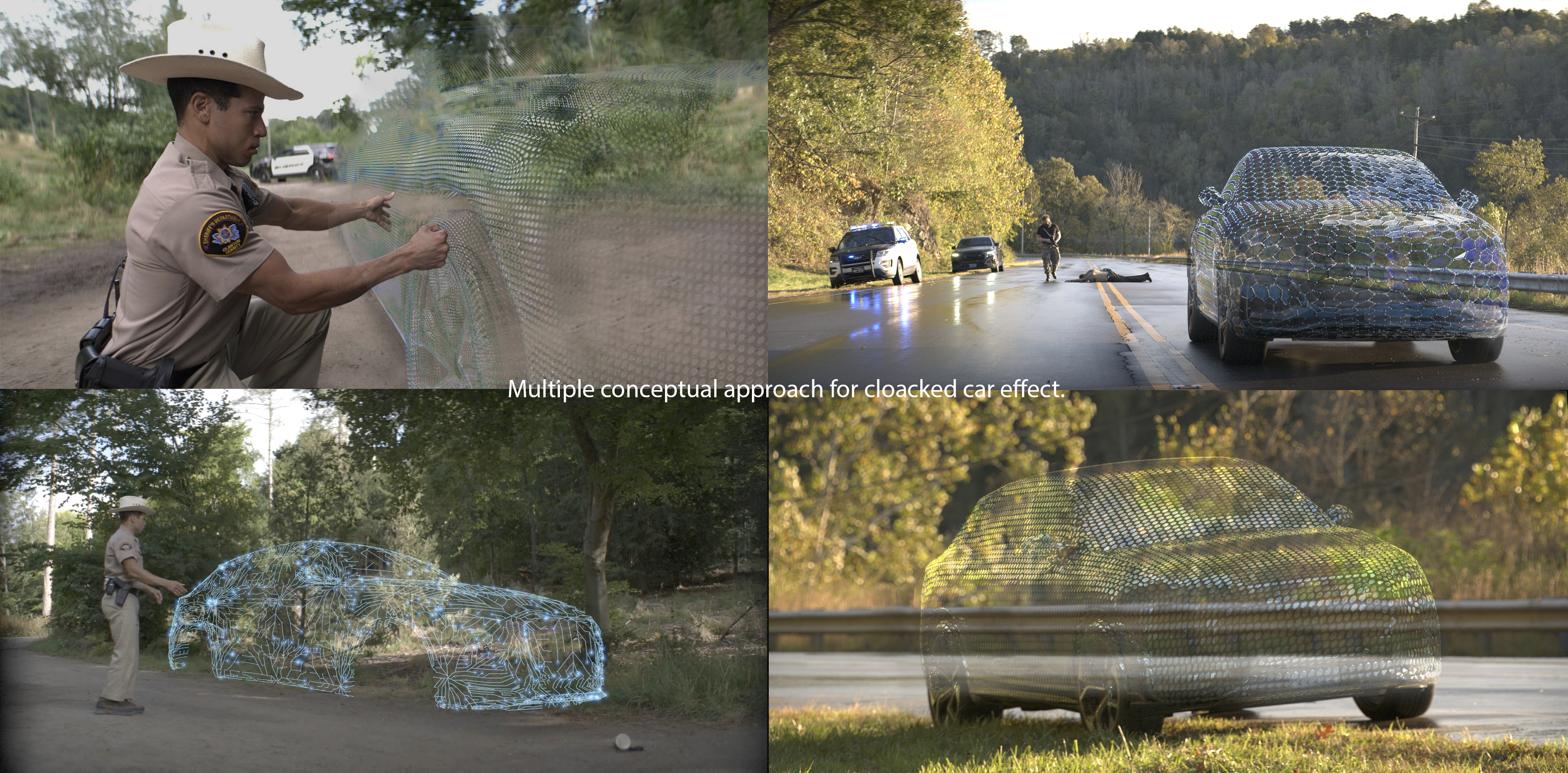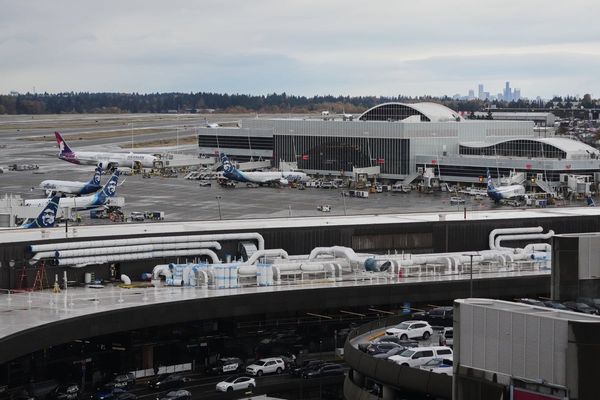
Sanjay Trimbakkar is a visualisation director with a successful background in set design, 2D design, advertising and recently 3D design and VFX. Sanjay has worked for some of the world's largest ad agencies and has now found a home at India's FutureWorks, a specialist VFX studio.
After beginning his career in Hindi cinema, our latest A Day In The Life interviewee, Sanjay, found a place in advertising, working with some of the world's biggest brands, including Kellogg's, Godrej and Colgate. His move to FutureWorks sees his career come full circle.
Sanjay's journey demonstrates the increased globalisation of VFX and the rising importance of India's film and CG industry. FutureWorks has had a hand in some of the best shows and most creative VFX on Netflix, including creating the robot for Lost in Space and the East India-set Jaane Jaan, which was the most watched non-English movie on Netflix worldwide during its opening week in 2023.
If you want to follow in Sanjay's footsteps then he has some advice. Firstly, "Become really skilled at what you're passionate about, whether it's drawing or visual effects," and show this passion in your portfolio (read below for more advice).
The experienced VFX artist says loves his role at FutureWorks and says, "each day is a blend of creativity, collaboration, and a commitment to delivering high-quality visual concepts". What could be better?

How did you break into the industry and what was your path to FutureWorks?
My journey leading to the role of a creative concept visualizer at FutureWorks has been shaped by a passion for art and a commitment to creative excellence. It all began with my childhood fascination with drawing and painting, which motivated me to pursue a formal education in illustration at Sir J J School of Applied Art.
After graduation, I entered the entertainment industry as a junior assistant art director, collaborating with the late Sameer Chanda, a renowned art director and production designer in Hindi cinema. However, my creative pursuits took a new direction, leading me to the world of advertising. I started my advertising career as an illustrator at JWT advertising agency, marking the beginning of a 23-year-long journey in the sector.
During my extensive tenure in advertising, I had some diverse roles, including that of a creative illustrator, storyboard artist, and 2D animatic artist. I worked with reputable agencies such as LOW Lintas, JWT, O&M, McCann and FCB Ulka. I also had the privilege of working with household brands like LUX, Lakme, Denim, Kellogg’s, Godrej, Vaseline, Colgate, Close-up, Taj, Parachute, among others. This period also saw my transition to the 3D medium for animatics.
The turning point in my career came when I discovered FutureWorks. The studio's reputation for handling challenging creative scopes and its impressive VFX work, particularly evident in projects like The Empire, caught my attention. I was fortunate enough to be introduced to FutureWorks CEO Gaurav Gupta, and upon showcasing my portfolio, I received recognition and appreciation from Vinay Chuphal, the studio's creative head.
This positive response led to my integration into the FutureWorks team, where I continue to explore and grow my creative skillset in VFX. The studio's collaborative and innovative environment has provided me with an exciting platform to contribute to major projects and push the boundaries of creative expression.
What is your role at FutureWorks and what are the responsibilities?
As the visualisation director at FutureWorks, my role is crucial in shaping the creative direction of projects. This includes coming up with visual concepts, whether starting from scratch or improving existing visuals. Through collaborative brainstorming sessions, I actively contribute to the exchange of creative ideas within the team.
My responsibilities extend to extensive reference gathering, drawing from both the internet and internal asset libraries to ensure the accuracy and authenticity of visual concepts. Through a process of visual iteration, I refine and enhance proposed concepts, demonstrating the evolution of ideas to clients.
I am skilled in using software tools such as Photoshop, Maya, and Blender to bring concepts to life. This involves creating rough draft versions and implementing visual effects as necessary. Effective collaboration with the creative team, VFX supervisors, and other stakeholders is crucial. Input and feedback from the team play a key role in achieving the desired visual outcome.
Once a concept is finalised, I transition into a supervisory role, guiding the team through the execution of the final version. Ensuring cohesive teamwork and attaining the desired visual results become focal points at this stage.
In the ever-evolving VFX landscape, I maintain a commitment to continuous learning, exploring and adopting new techniques and tools to stay abreast of creative and visual effects trends. Overall, my role encompasses driving the creative vision for projects, maintaining a high standard of quality, and fostering innovation throughout the creative process.

What’s a typical day like on the job?
As a creative concept visualiser at FutureWorks, my typical day involves creativity and collaboration. Mornings start with project briefings, followed by extensive conceptualisation and research. Utilising tools like Photoshop and Blender, I bring concepts to life through continuous iteration and refinement.
Effective communication with the creative head and stakeholders is crucial throughout the day. As concepts progress, my role transitions into supervision, guiding the team to execute the final version and ensuring alignment with the client’s brief.
Client interactions may occur, and continuous learning remains integral for staying updated on industry trends. Challenges are addressed through creative problem-solving. Evenings typically involve dailies sessions, where we review each CG artist's work, fostering collaboration and maintaining high standards.
What do you think the key discussions in the VFX industry will be in 2024?
In 2024, key discussions in the VFX industry will revolve around a variety of trends and advancements. The continued integration of AI and machine learning, with a focus on automation and creative enhancements is a big one. Real-time rendering technologies are expected to be a significant point of interest, offering quicker feedback loops and more interactive workflows.
Virtual production techniques, such as virtual sets and augmented reality, are likely to be explored further, potentially reshaping traditional filmmaking and VFX integration. Sustainability in VFX production may also be a prominent discussion, with an increased focus on adopting environmentally friendly practices.
Extended reality (XR) technologies, including virtual reality (VR) and augmented reality (AR), are expected to continue evolving and finding new applications in the VFX industry. The effectiveness of remote collaboration tools, especially in response to global events, may be a subject of ongoing scrutiny.
As deepfake technology advances, ethical considerations, regulations, and responsible usage are likely to be discussed within the VFX community. New creative trends and storytelling techniques driven by technological innovations and evolving audience expectations may shape industry conversations.
Diversity and inclusion within the VFX workforce will rightly continue to gain prominence, with discussions around addressing challenges and fostering a more representative industry. Additionally, global collaborations for improved efficiency and creativity may be emphasised, recognising the international nature of the VFX industry.
Do you see Bollywood and Indian production continuing to globalise due to the presence of streaming services?
Bollywood and Indian shows are becoming more popular around the world, and it's mainly because of streaming services like Netflix and others. These services let people from different countries watch Indian movies and series easily.
People like the diverse and interesting stories in Indian movies, and streaming platforms make it easy for everyone to enjoy them. Also, Indian filmmakers are working with people from other countries, and streaming companies are investing a lot of money to make Indian shows even better.
Because of these streaming services, people everywhere can learn about Indian culture by watching their movies and series. Some Indian movies have become really popular globally, which encourages filmmakers to create stories that people from different parts of the world can enjoy.
However, things in the entertainment world can change, so it's good to keep an eye on what's happening in the industry to see how these trends develop in the future.

What inspires you on a personal level?
On a personal level, what inspires me is my deep passion for drawing and painting. Being creative brings me immense joy, whether I'm brainstorming new ideas or bringing them to life through art. The inspiration I gained from my teachers during my art school days is also significant. They not only imparted knowledge but also instilled in me a way of thinking that is creative and innovative.
Throughout my 27-year career in advertising and VFX, each project has been a chance to be creative and learn something new. Working at FutureWorks, especially on projects like ‘The Empire’ and ‘The Peripheral’ has been really fulfilling.
What's your top film and TV show of all time?
James Cameron’s Titanic! The film is celebrated for its compelling storytelling, the portrayal of love and sacrifice, and groundbreaking visual effects. The integration of visual effects in a seamless manner has left a lasting impact on me. It's a landmark film in the history of cinema.
I don't watch a lot of TV but I enjoyed Cabinet of Curiosities. It strikes a great balance between storytelling and VFX work. Each of the stories features a good blend of engaging VFX and a compelling narrative.
What are your essential tools of the trade and why?
My process for developing concepts involves several stages. It all starts with initial sketches in Photoshop, a crucial step where the flexibility and ease of my Cintiq Pro monitor come into play.
Once a sketch is chosen, I move on to refining it by browsing references on Google. This adds depth and detail to the concept, ensuring it aligns with my creative vision.
For the next phase, my tool of choice is Blender, which serves a dual purpose for basic 3D modelling and rendering. Blender's efficiency is second-to-none, particularly with its quick rendering and robustness.
Blender's Geometry Nodes have become an integral part of my workflow, playing a significant role in the quick and effective setup of scenes. This feature enhances the overall efficiency of my concept development process.

What has been the favorite project you’ve ever worked on?
The Peripheral stands out as a favourite project in my career. The creative challenge and satisfaction gained from working on this major Amazon Prime series was incredibly fulfilling. The VFX supervisor, Jay Worth, presented a unique idea – an invisible cloaked car. To bring this concept to life, I delved into Blender to experiment with digital uncloak shield effects.
The creative process involved further developing various concepts in Blender until we arrived at an effective and visually stunning idea. Collaborating closely with Jay, I received valuable inputs that further enhanced the final scene. The end result was a captivating and impressive visualisation of the invisible cloaked car, showcasing the successful synergy between creative thinking and technical execution.
The Peripheral not only pushed creative boundaries but also highlighted the power of collaboration and innovation in VFX. The satisfaction gained from overcoming the challenges posed by this project makes it a standout experience for me.
Do you have any advice for individuals aspiring to enter the industry?
Connect with people by attending events – it might open up opportunities for you. Stay in the loop about the latest industry trends to keep your skills fresh. Consider internships, freelance work or short-term roles to get hands-on experience. This can be a great way to learn and grow. Work on improving how you communicate and collaborate with others – it's important in any job. Express your enthusiasm for what you love doing. Let people know what you're passionate about. Always be open to learning new things. The industry evolves, so staying curious is a plus.
And most importantly, don't let challenges discourage you. Keep pushing forward, learn from experiences, and continuously improve.
You can find out more about Sanjay Trimbakkar via his LinkIn page and visit the FutureWorks web page for more projects from this VFX studio.







